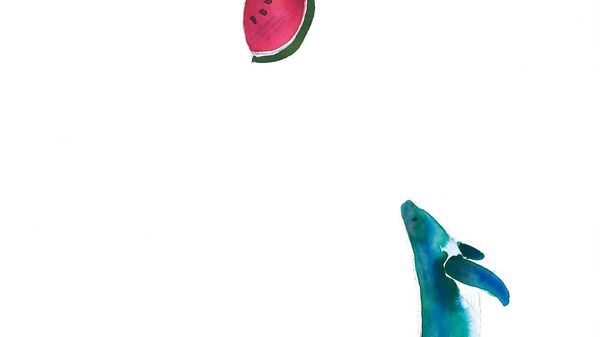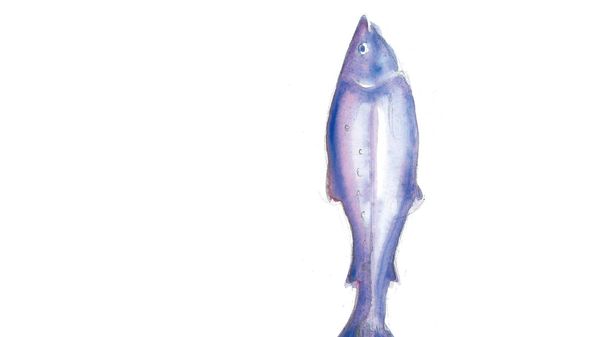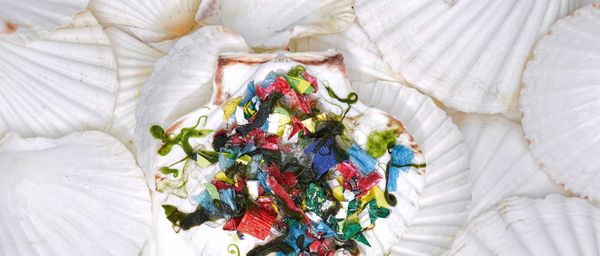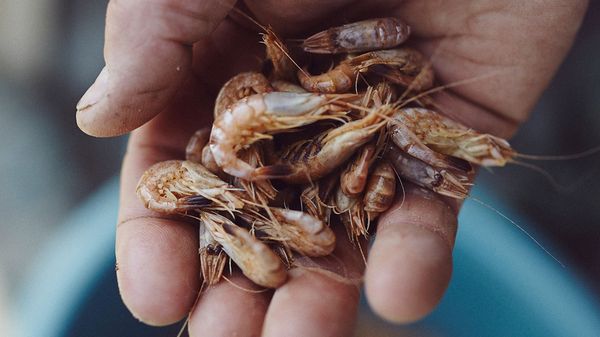
Each and every minute, the equivalent of a rubbish truck full of plastic gets dumped into the ocean - in the form of nanoparticles.
That's how plastic gets into our food. Here are two projects that could help solve the problems.
Our oceans are in danger of being suffocated by plastic
Plastic bags, plastic bottles, plastic packaging, industrial plastic waste:
by some estimates, around 6.4 million tonnes of plastic refuse ends up in the sea annually; 1.1 million birds and fishes die every year as a result. This rubbish washes up on the coasts and forms huge floating islands which make their way across the oceans; some experts even refer to the “eighth (plastic) continent”. In the Pacific Ocean alone, there is a heap of plastic rubbish as large as central Europe. Once it’s out at sea, plastic is almost indestructible. Biodegradation is measured in decades, and as waves and UV light start to break it down, it essentially turns into powder: microparticles of plastic. These are an invisible danger, as the decay of the plastic structures release chemicals such as bisphenol A, phthalate, and styrene compounds into the water; these substances accrue in the food chain and can have effects on the genetics and hormones of marine animals – and of humans, who are, of course, at the end of the food chain. Environmental activists have been warning about this growing issue for years now, a problem which could tip the earth’s delicate ecological balance over the edge once and for all.

Ocean Cleanup
The idea is to collect and remove plastic by waiting at a point in the ocean where currents lead to a continuous exchange of water. There is just such a place between Hawaii and California, for example, and that is where 22-year-old Boyan Slat wants to start cleaning up the oceans in 2020 with a kind of gigantic sieve. It’s a simple enough idea, but rather complicated when it comes to the implementation. The way Slat wants to do it is to deploy an array with two tunnels of around 50 kilometres in length, coupled into a large V-shape and floating on the surface of the water.
These tunnels would filter out plastic particles
of up to 2 mm, which would then be guided towards the middle of the V and gathered in a large container, which is regularly emptied. The plastic gathered would be sold on to power stations, which could burn it to generate electricity and heat. Although this method would not deal with microparticles already in the water, it would slow the rate at which they are building up by removing decaying material from the seas.
Boyan Slat, the project’s initiator, is from the Netherlands. In 2011, aged 17 and on a diving trip, he was shocked when, underwater, he saw more plastic than fish. Since then, his goal has been to clean up the oceans, and he is convinced that his project is the answer: if his 100 km arrays were posted at just 24 key points in the world’s seas, they would filter most of the plastic in the oceans out in relatively short order. He has even put a 100 m prototype out to sea with promising results, and a two-kilometre follow-up is due to be deployed off the Japanese coast before the end of the year. Slat can count on a lot of help, too: his company has 30 members of staff and 120 volunteers.

Plastyx: How bacteria can destroy plastic at sea
„If your enemy is small, fight it with something small.” That’s the strategy a group of eight Harvard students came up with last year to remove plastic particles from the world’s seas.
They’ll be working with a gigantic army of tiny little helpers – with bacteria. Under their professors’ guidance, the students have genetically modified Escherichia coli bacteria so that they can break down PET, a particularly frequent plastic pollutant, even generating energy in the process. To make sure the whole thing doesn’t get out of hand, the bacteria are kept in a container along with a battery and a GPS transmitter. The containers are then set afloat and make their way across the oceans, sending signals as to their whereabouts that show how much plastic is in the water around them.
This project won a gold medal at a competition
last year and some of the students involved are now developing the concept further under the name plastyX. “Instead of electricity, however, we now want to start producing what are known as biomolecules: they are much more valuable and open up a path to the project financing itself in the future,” says biotechnology student Daniel Ulm, one of the founders of plastyx. So now the projects initiators are trying to develop bacteria which can use microplastic to produce special proteins and a range of other molecules which could be of use to biotechnology companies or university and hospital research departments. If they succeed, plastyx will have turned a problem into a win-win situation: not only will pressure on the marine biosphere be reduced, but processing the plastic waste will generate substances of genuine use in research and medical applications.


